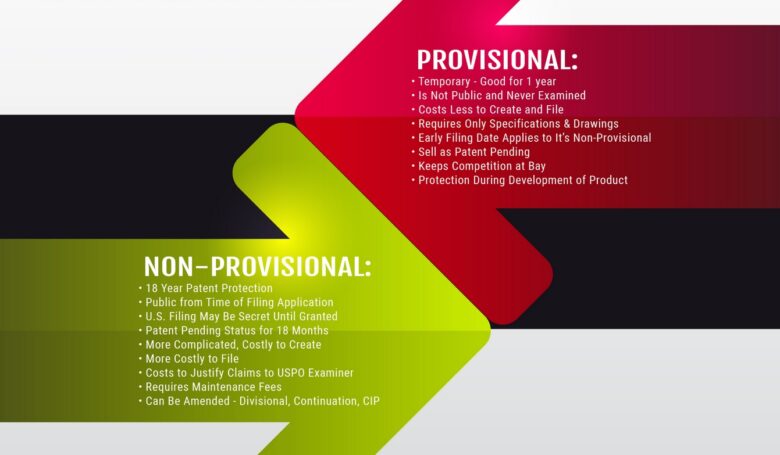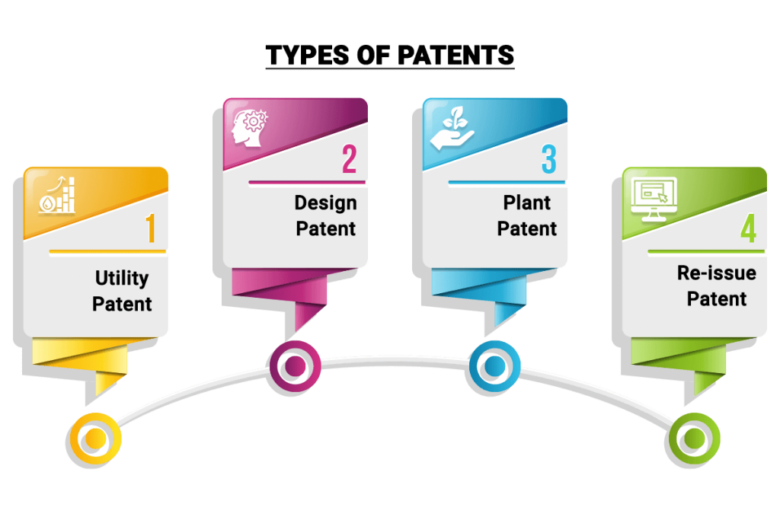In a world where ideas shape the future, it becomes crucial to safeguard these valuable assets. Just as physical property rights protect against theft and unauthorized use, intellectual property rights, such as patents, safeguard inventive minds from imitation. By demystifying the patenting process and understanding the different patent types, you secure a competitive advantage, stimulate creativity, and foster innovation within your personal or professional sphere.
Contents
- Understanding the Basics of Patents
- Importance of Patent Research
- Step-by-Step Patenting Process Overview
- Conceptualizing and Documenting Your Invention
- Conducting a Patentability Search
- Working with an Attorney or Agent
- Drafting an Application
- Filing Options: Provisional vs. Non-Provisional Applications
- Patent Examination Process
- Different Types of Patents
- International Protection
- Maintenance and Enforcement
Understanding the Basics of Patents
A patent is a legal instrument that grants its holder the exclusive right to make, use, and sell an invention for a specific period, typically 20 years from the filing date. It’s a powerful tool that fuels innovation, promoting an environment where inventors can invest in R&D without fearing that others might exploit their work. They play a pivotal role in fostering entrepreneurship, propelling economic growth, and facilitating the transfer of technology.

Source: boldip.com
Importance of Patent Research
Before embarking on the patenting journey, you need to comprehend the landscape that surrounds your invention. This is where the research comes in. By scrutinizing previously granted patents and published applications (collectively known as prior art), you can gauge the novelty of your invention and predict its patentability. A well-conducted research not only ensures you’re not infringing on existing patents but also fortifies your application by clearly distinguishing your invention from prior art.
Step-by-Step Patenting Process Overview
The patenting process, while extensive, can be distilled into key stages: idea conception, documenting your invention, conducting a patentability search, seeking professional help, drafting an application, filing the application, and traversing the examination process. It culminates in the grant of a patent, protecting your invention from unauthorized use. This journey, while challenging, yields immense rewards when navigated correctly.
Conceptualizing and Documenting Your Invention
Every invention starts with an idea. It’s crucial to document every facet of your invention meticulously, including its purpose, operation, and the problem it solves. Clear descriptions, detailed sketches, and prototypes provide concrete evidence of your inventive process. This documentation not only assists in the drafting of your patent application but also serves as proof of inventorship should a dispute arise.

Source: karibi.com
Conducting a Patentability Search
A patentability search is a meticulous review of existing products and technical literature to evaluate if your invention is novel and non-obvious. It is a crucial step that can save time, money, and effort by identifying potential obstacles in the patenting process early on. The search can be conducted using various databases, including the USPTO’s patent database, Google Patents, outlets such as InventHelp, and international product databases.
Working with an Attorney or Agent
The intricacies of patent law can be daunting, making it wise to seek assistance from attorneys or agents. These professionals are well-versed in the patenting process and can provide invaluable advice, from conducting searches to preparing and filing applications. Their expertise can make the difference between a weak application and a robust one that withstands the scrutiny of patent examiners.
Drafting an Application
A patent application is a legal document that meticulously describes your invention and stakes your claim to it. It contains several components, including a detailed specification, claims that define the scope of your invention and drawings that visually describe it. A well-drafted application clearly distinguishes your invention from prior art and is comprehensive enough to preempt any ambiguity.

Source: centralcoastpatent.com
Filing Options: Provisional vs. Non-Provisional Applications
The United States Patent and Trademark Office (USPTO) provides inventors with two types of patent applications to initiate the patenting process: provisional and non-provisional. A provisional application, often referred to as a “place-holder,” is an initial filing that secures a filing date but does not mature into a granted patent unless followed by a non-provisional application.
It is an excellent, cost-effective strategy for inventors to establish an early filing date, gain a ‘patent pending’ status, and buy extra time to refine the invention or gauge its market potential. Conversely, a non-provisional application kicks off the formal examination process for its grant, solidifying the steps towards acquiring full rights.
Deciding between the two involves strategic considerations based on your invention’s maturity, available resources, and long-term goals, as well as potential market dynamics and competitive landscape.
Patent Examination Process
Upon filing the patent application, it embarks on a rigorous journey known as the examination process, wherein a USPTO patent examiner scrutinizes the application to determine its eligibility for a full grant. This crucial evaluation includes a thorough assessment of the invention’s novelty, non-obviousness, and usefulness—core requirements for patentability.
Throughout this journey, the process may involve a series of communications between the examiner and the applicant (or their representative). These exchanges, termed office actions and responses, can involve various issues about the invention’s patentability and the clarity of the application. The examination phase is an iterative, dialogue-rich process that seeks to ensure the patentability of the invention while maintaining the integrity of the entire system.
Different Types of Patents
Patents can be broadly classified into three types: utility, design, and plant patents. Utility types protect the functional aspects of an invention, offering protection to new processes, machines, and compositions of matter. Design patents safeguard the ornamental design of a functional item, placing emphasis on the aesthetics and visual appeal of a product. Plant kinds cover new and distinct, asexually reproduced plants, essentially providing a shield for botanic inventors. Each type has unique requirements and offers a specific kind of protection, each serving as armor in its own domain.

Source: corpbiz.io
International Protection
Patents are territorial rights, meaning they are enforceable only within the country that granted them. However, in our interconnected global economy, protection beyond national borders often becomes paramount. You can file an application under the Patent Cooperation Treaty (PCT), which allows you to seek protection simultaneously in several countries. This pathway streamlines the international patenting process, creating a uniform system that saves you time, effort, and resources, while ensuring your invention gets the global safeguard it deserves.
Maintenance and Enforcement
Being a patent owner is just the beginning of a responsibility-laden journey. You must pay maintenance fees at regular intervals to keep your patent in force. This is essential as it ensures your exclusive rights over your invention remain intact. Furthermore, enforcing your patent against infringements is your responsibility. It requires a proactive approach, which includes monitoring the market for potential infringements, sending cease-and-desist letters, or initiating legal proceedings. These steps, although they may require effort and vigilance, are crucial to protect and make the most of your patent rights.
